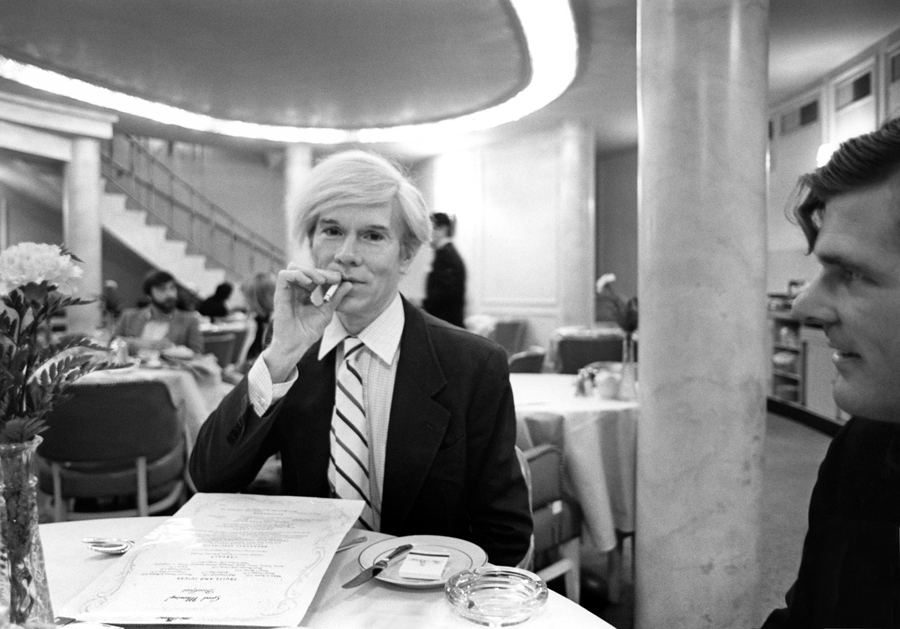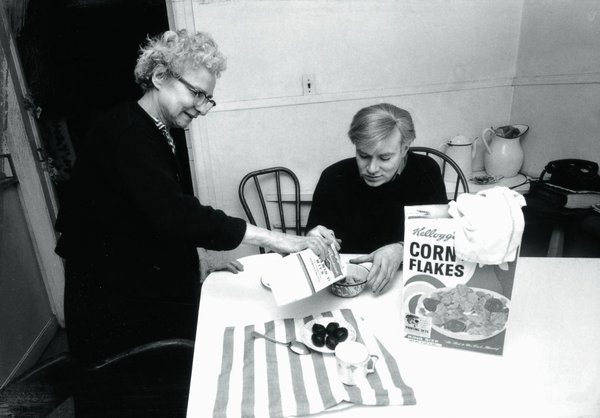Near the end of his new biography of Andy Warhol, where he is discussing his legacy, Blake Gopnik mentions that there have been at least 500 books about Andy Warhol. This might logically lead one to ask: Why should there be another one? Besides the fact that this one has done the most complete research (over 40% of the Kindle version is footnotes) the answer might be that this is the best examination of Andy Warhol, the human being. When artists deal in myths and image, it is easy to take those at face value. The visual image that most people have of Warhol is some variation of a look that he arrived at in the 1960’s after a certain amount of trial and error. There is much new insight to be gleaned when you picture his art school style. (There are plenty of myths about his self-taught outsider status, but he actually went to Carnegie Tech and was highly regarded by many of his instructors, who actually kept the art he gave them.) It is eye-opening to imagine him in the late 1940’s with green hair, a tailor-made pink corduroy suit, mismatched shoes, a tie dipped in paint, and multi-colored fingernails. There are also persistent myths that he was asexual. As we get to know him over the course of the book, we learn that there were multiple relationships. And that he was a romantic, always hoping to meet somebody to settle down with.

In a world where his art fetches record auction prices, it can be surprising to learn that there were times after he was world famous, that he couldn’t afford to pay for having his silkscreens made. In fact, until the portraits that ruined his reputation started generating a steady income stream, money was often a worry. When he was shot in 1968, he was almost ruined financially. And throughout the height of his early pop success, he was still funding his fine art with commercial commissions. (One room of his townhouse was a studio, where a hired assistant who could perfectly ape his style, his mother’s handwriting, and his own signature, continued to operate as his other commercial factory)

Rare early image of Andy Warhol
The woman who had the idea to paint soup cans made him pay her for the idea before sharing it with him. Nobody would show them in New York, and when he brought them to show in LA, he only sold four of them. Most of the early work that is now considered peak Warhol barely sold and was poorly reviewed. Some of the most humanizing moments occur as he is trying to find new income sources. When he is invited to show his films to a group of ladies who lunch, in hopes of scoring portrait commissions, he is forced to use the servant’s entrance. The people who controlled his film and magazine production were staunch Republicans (Warhol made Nixon’s enemy list with a McGovern poster) as well as most of the potential portrait subjects. We get an in-depth look at his famous mother, who lived with him after he moved to Manhattan, and learn that she was more sophisticated than the image that she shared with the world. The thing that we get the most of is context. There haven’t been a lot of chronicles of the specific milieu that Warhol inhabited during the mid-century.

Robert Levin, Andy Warhol seated at a table at the Pierre Hotel in New York City, 1981
This is the most clear-eyed and methodical telling of the life of Andy Warhol to come along yet. Reading it is like sitting down with the dogged detective who has spent two decades (the actual amount of time that Gopnik spent researching) compiling a thorough account. It’s chronological, with chapters covering distinct periods of Warhol’s evolution. One of the things that this format allows us to see is which players were active in Warhol’s life during which years. There is a perception that all of the superstars interacted with each other throughout the 1960’s. In reality some of them barely lasted a year. Other people drifted in and out of his life. Some of them never met each other. Gopnik knows all of the myths surrounding Warhol and addresses the bulk of them. It never feels like he has an agenda beyond getting the whole story down in a “just the facts, ma’am” sort of way. He has a unique way of addressing certain personal matters without seeming salacious. Exhaustive without being exhausting, this is likely to remain the definitive Warhol biography for some time to come.
Warhol
By Blake Gopnik
Illustrated 976 pp.
Ecco $45


